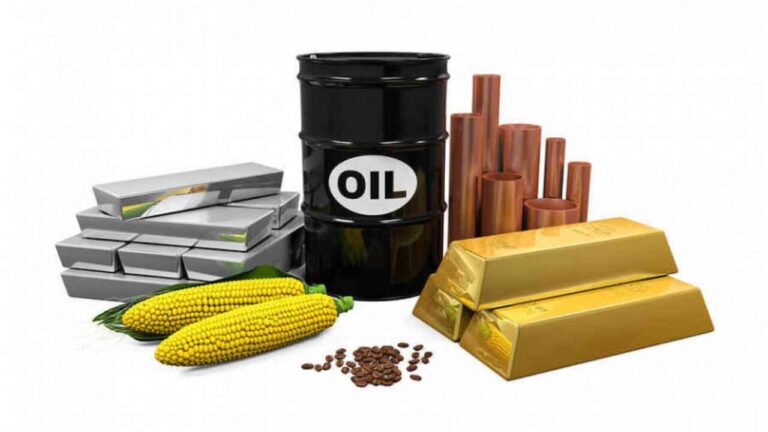Commodity: meaning, types, benefits, risks and more

Commodities are essential resources that are traded in the global market. They can be natural resources such as oil, gas, and metals or agricultural products like wheat, coffee, and sugar. The price of commodities fluctuates based on supply and demand, making them an attractive investment option for traders and investors. Understanding the concept of commodities is crucial for anyone who wishes to participate in the global market.
This article will provide an overview of commodities, including their meaning, types, and how they are traded.
What are commodities
Commodities are raw materials or primary agricultural products that are traded on exchanges. These products are essential for the functioning of economies worldwide, as they are used in the production of goods and services. Commodities can be categorized into two broad categories: hard and soft commodities.
Hard commodities are natural resources that are extracted from the earth, such as metals, energy, and minerals. Examples of hard commodities include gold, silver, copper, crude oil, natural gas, and coal. These commodities are usually extracted from mines or oil wells and are then transported to different parts of the world.
Soft commodities, on the other hand, are agricultural products that are grown and harvested. Examples of soft commodities include wheat, corn, coffee, cocoa, sugar, and soybeans. These commodities are traded on exchanges and are used in the production of food, clothing, and other consumer goods.
The prices of commodities are determined by supply and demand. If the supply of a particular commodity is limited, and there is high demand, then the price of that commodity will rise. Similarly, if there is a surplus of a particular commodity and low demand, then the price of that commodity will fall.
Types of commodities and their uses
There are several types of commodities, each with its unique characteristics and uses. Here are some of the most common types of commodities and their uses:
1. Energy commodities
These include crude oil, natural gas, and coal. Energy commodities are used to power homes, businesses, and industries. Crude oil is also used to produce gasoline, diesel, and jet fuel
2. Metals commodities
These include gold, silver, copper, platinum, and palladium. Metals commodities are used in the manufacturing of automobiles, aeroplanes, electronics, and jewellery.
3. Agricultural commodities
These include wheat, corn, soybeans, coffee, cocoa, and sugar. Agricultural commodities are used in the production of food, clothing, and other consumer goods.
4. Livestock Commodities
These include cattle, hogs, and sheep. Livestock commodities are used for meat production and also for dairy products such as milk and cheese.
5. Softwood Commodities
These include lumber, plywood, and paper. Softwood commodities are used in construction, furniture manufacturing, and paper production.
Factors that influence commodity prices
The prices of commodities are affected by a wide range of factors, including supply and demand, geopolitical events, weather conditions, and government policies. Here are some of the most significant factors that influence commodity prices:
- Supply and Demand: As mentioned earlier, the basic principle that determines commodity prices is supply and demand. If there is a shortage of a particular commodity, and there is high demand, the price of that commodity will rise. Similarly, if there is an oversupply of a commodity and low demand, the price of that commodity will fall.
- Geopolitical Events: Geopolitical events such as wars, natural disasters, and political instability can have a significant impact on commodity prices. For instance, if there is a war in a region that produces oil, the supply of oil may be disrupted, leading to an increase in the price of oil.
- Weather Conditions: Weather conditions such as droughts, floods, and hurricanes can affect the production of agricultural commodities. For instance, if there is a severe drought in a region that produces corn, the supply of corn may decrease, leading to an increase in the price of corn.
- Government Policies: Government policies such as subsidies, trade tariffs, and regulations can affect the production and trade of commodities. For instance, if a government imposes tariffs on a particular commodity, the price of that commodity may increase, as the cost of importing that commodity will increase.
How to trade commodities
There are several ways to trade commodities, including futures contracts, exchange-traded funds (ETFs), and mutual funds. Here are some of the most common ways to trade commodities:
- Futures Contracts: Futures contracts are agreements to buy or sell a particular commodity at a specified price and time in the future. Futures contracts are traded on exchanges, and investors can buy or sell these contracts to speculate on the price of the underlying commodity.
- Exchange-Traded Funds (ETFs): Exchange-traded funds (ETFs) are investment funds that track the performance of a particular commodity or group of commodities. ETFs are traded on exchanges and are a popular way to invest in commodities.
- Mutual Funds: Mutual funds are investment funds that pool money from multiple investors to invest in a variety of assets, including commodities. Mutual funds are managed by professional fund managers and are a good option for investors who want to invest in commodities but do not have the expertise or time to manage their investments.
Benefits and risks of investing in commodities
Investing in commodities can provide investors with several benefits, including portfolio diversification, protection against inflation, and the potential for high returns. Commodities tend to have a low correlation with other asset classes such as stocks and bonds, making them an effective way to diversify a portfolio and reduce overall portfolio risk. Additionally, commodities have historically been a good hedge against inflation, as their prices tend to rise during periods of high inflation.
However, investing in commodities also comes with several risks. Commodities can be volatile, and their prices can fluctuate rapidly due to factors such as changes in supply and demand, geopolitical events, and weather conditions. Additionally, investing in commodities requires specialized knowledge and expertise, and investors must carefully evaluate their options and be prepared to manage their investments actively.
Conclusion
Commodities are a vital component of the global market, and their price movements can have significant implications for economies worldwide. The demand and supply of commodities determine their value, making them a popular investment choice for traders and investors.
Don't miss a thing. Follow us on Telegram and Follow us on WhatsApp. If you love videos then also Subscribe to our YouTube Channel. We are on Twitter as MakeMoneyDotNG.





